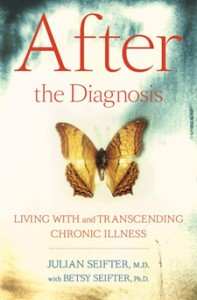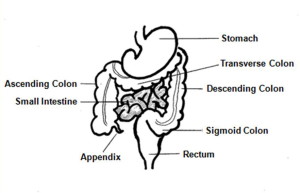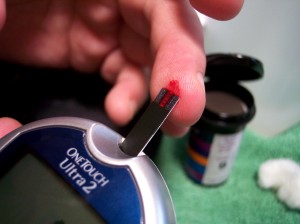18
May 2015
02
Oct 2013
 Forensic scientists in England have used a cat DNA database to identify cat hair found on a dead body, and help convict the killer.
Forensic scientists in England have used a cat DNA database to identify cat hair found on a dead body, and help convict the killer.
g
The UK’s first cat database of DNA from British cats was established by forensic scientists at the University of Leicester, and has already helped to solve a homicide. When the remains of a man were found in a trash bag on an English beach last year, 8 cat hairs were found on a curtain wrapped around his body. And thanks to the help of this DNA database, the killer was subsequently convicted.
The cat hairs were initially examined by the Veterinary Genetics Laboratory at the University of California, Davis, and were shown to match hair of a cat belonging to the victim’s friend. DNA obtained from the cat hair, however, was not nuclear DNA (nDNA), but mitochondrial DNA (mtDNA). While nDNA, found in hair roots, is individual-specific, mtDNA, present in hair shafts, is maternally-inherited and can therefore be shared by many animals.
Although the mtDNA was also shown to differ from 493 other randomly sampled cats in the United States, prosecutors needed to determine the evidential strength of the match by demonstrating how rare the match might be for 2 random cats in the UK.
Consequently, Jon Wetton, a geneticist at the University of Leicester, worked with his team to create a database of cat DNA for this purpose. After collecting samples of mtDNA from 152 cats across Britain over a 6-week period, only 3 were a match with the cat hairs from the crime scene, confirming that it was an uncommon type in the UK as well as in the United States. Although not a perfect match, it indicated that the hairs on the victim’s torso most likely belonged to his friend’s cat, and provided evidence that was able to be used to help convict the killer.
This marks the first time that cat hair has been used in a criminal trial in the UK, and the group at the University of Leicester aims to publish their data for use in future crime investigations.
d
09
Jul 2013
 A few weeks ago I attended our final AMWA-NE Chapter meeting for the year, and I have to say, it was a great evening.
A few weeks ago I attended our final AMWA-NE Chapter meeting for the year, and I have to say, it was a great evening.
We met for good food and wine at an Italian restaurant, in Wellesley, MA, and were fortunate enough to have a guest speaker for the evening – Dr Julian Seifter, a nephrologist at Harvard Medical School.
In addition to being a leading nephrologist here in the US, Dr Seifter has experienced the “other side” of the doctor-patient relationship. During his talk he recalled memorable stories of working with patients, and his story as a patient dealing with his own chronic illnesses. And he talked of how dealing with his own conditions has helped his approach to his patients.
You can also check out this link to a conversation he had with The New York Times in 2010.
If you ever get the chance to hear him speak, I’d thoroughly recommend it – he was extremely engaging, and I could have listened to him all night.
With the help of his wife, Dr Seifter has written a book about his experiences – this is the image of the book from his website – it’s a wonderful read, and again, one I didn’t want to finish.
If you haven’t already done so, don’t forget to join AMWA and check out your local chapter meetings.
And if you’re local to the New England region, please come and join us.
27
Mar 2013
A diet high in vegetable fat is superior to a low-fat diet for reducing the risk of cardiovascular disease
b
February was American Heart Month, and it’s probably no coincidence that it also marked the release of a landmark study from Spain, reporting how a Mediterranean diet supplemented with extra virgin olive oil (EVOO) or nuts markedly reduced the risk of severe cardiovascular events among people with high cardiovascular risk.
Until now, there was little empirical evidence that the Mediterranean diet lowered the risk of cardiovascular disease. It was based predominantly on data reporting that people from Mediterranean countries appeared to have reduced rates of heart disease – a statistic that could be affected by multiple factors in addition to diet. In one of the world’s largest and longest dietary intervention studies, a multicenter, randomized trial in Spain investigated the effect of the Mediterranean diet on cardiovascular risk. They reported their findings in the February 25, 2013 issue of the New England Journal of Medicine.
The results showed that a Mediterranean diet supplemented with either EVOO or nuts reduced the incidence of severe cardiovascular events by up to 30% in participants at high risk of developing heart disease.
Researchers from the Hospital Clinic of Barcelona and the Universidad de Navarra in Pamplona in Spain, randomly assigned 7,447 men and women (age 55-80 years) with no cardiovascular disease but high cardiovascular risk factors (due to overweight or obesity, diabetes mellitus, hypertension, increased low-density lipoprotein cholesterol levels, reduced low-density lipoprotein cholesterol levels, or a family history of coronary heart disease), to one of three diets for five years, starting in October 2003:
-
A Mediterranean diet supplemented with EVOO (at least 4 tablespoons a day)
-
A Mediterranean diet supplemented with nuts (one ounce a day of a combination of walnuts, almonds and hazelnuts)
-
A standard low-fat diet
Participants in the Mediterranean diet groups were also instructed not to reduce calorie intake, but to avoid commercially made cookies, cakes, and pastries, and to limit their intake of processed meats and dairy products. They were required to eat: at least three servings a day of fruits; at least two servings a day of vegetables; fish at least three times a week; legumes (beans, peas and lentils) at least three times a week; white meat instead of red. Those who drank alcohol were also asked to have at least seven glasses of wine a week with meals.
Those in the Mediterranean diet groups additionally attended regular dietary training sessions. Individuals following the low-fat diet, however, received leaflets for the first three years that explained a low-fat diet; at the three-year mark, these participants were then also invited to attend regular dietary training sessions, and received dietary advice at the same intensity level as those in the Mediterranean groups.
The trial was stopped early, at 4.8 years, when it was deemed unethical to continue the study due to the clear benefit demonstrated among participants in the Mediterranean group diets. Compared to the low-fat diet, individuals following the Mediterranean diet with EVOO or nuts were less likely (30% and 28% respectively) to experience a major cardiovascular event (myocardial infarction, stroke, or cardiovascular death).
The researchers reported that individuals stayed with the Mediterranean diet, while participants in the low-fat diet group found compliance difficult, and did not actually reduce their fat intake much. Consequently the trial ended up comparing the Mediterranean diet with the typical modern diet that comprises red meat, processed foods, commercial baked goods, and sodas.
Participants in the low-fat diet group were also twice as likely to drop out of the study, than those following the Mediterranean diets (11.3% vs 4.9%).
The results of this study confirm the benefits of the Mediterranean diet in reducing heart disease. They also support evidence that low-fat diets are not especially beneficial, and are difficult for individuals to maintain. The researchers did report, however, that although the diet reduced the risk of heart disease in individuals at high risk for it, further studies are necessary to determine the benefits of this type of diet in people at low risk of heart disease.
20
Feb 2013
 Were you one of the 50% of Americans who set up a New Year’s resolution last month as you rang out the old, and rang in the new? If so, I’m sure it’s no surprise to you to learn that although some people manage to stick with their goals, the majority, however, give up.
Were you one of the 50% of Americans who set up a New Year’s resolution last month as you rang out the old, and rang in the new? If so, I’m sure it’s no surprise to you to learn that although some people manage to stick with their goals, the majority, however, give up.
“What a mistake – the whole idea around New Year’s resolutions. People aren’t picking specific behaviors, they’re picking abstractions,” says Stanford University Professor, BJ Fogg.
Professor Fogg explains that people simply don’t do well when it comes to the vague aspirations that comprise most resolutions. He feels that abstract goals don’t work unless they are tied to specific behaviors, because they can be too difficult for the brain to focus on. He says that in order to retain new behavior, it needs to be instinctual – the more you have to remember to do something, the better the chances are that you’ll talk yourself out of it.
jk
Why Our Brain Has Trouble Handling New Year’s Resolutions
We all know that willpower is the magic ingredient to help us stick to our resolutions. The cells in the brain that control willpower are found just behind the forehead, in the prefrontal cortex – the region that is also responsible for managing short-term memory, helping us stay focused, and solving abstract tasks.
But the problem with the good old New Year’s resolution is that it typically requires a huge amount of willpower to carry it out – so much that our brain just can’t cope. Professor Baba Shiv at Stanford University demonstrated this, using 2 groups of undergraduate students. He gave one group a two-digit number to remember, and the other a seven-digit number to remember. Following a short walk, the two groups were offered a choice of two snacks: a slice of chocolate cake or a bowl of fruit. Surprisingly, the students with 7-digit numbers to remember were twice as likely to pick the slice of chocolate compared to the students with the 2-digit numbers.
Why does this happen? “Those extra numbers took up valuable space in the brain—they were a “cognitive load” – making it that much harder to resist a decadent dessert”, says Shiv.
Consequently, your prefrontal cortex needs to manage willpower in much the same way as a muscle needs to be trained. Making a decision at the start of the New Year to tax your prefrontal cortex with something like a resolution to stop smoking or to join a gym for the first time, is likened to trying to lift a 300lb barbell without any previous training.
However, making a new behavior “instinctual” – the crucial aspect for keeping it going – will better help you achieve any new habit. Since this is missing in 90% of all New Year’s resolutions, it makes them so likely to fail.
Fogg describes how the key is to make any goal a habit first. And, most importantly, to make it a tiny one. How might this translate to some of the most common New Year’s resolutions? Well, instead of making a vague aspiration to stop smoking, first resolve to merely stop smoking that one cigarette you have every morning after breakfast. And instead of simply declaring how you’re going to only eat healthy food, start by substituting that daily morning pastry for a banana. The chances of success will be 50% higher if you can break down your resolution into a small habit, rather than leaving it open and vague.
l
Positive Reinforcement
Fogg also believes in the power of positive reinforcement by rewarding yourself immediately after performing your new habit. For example, if flossing your teeth is your new resolution, start by flossing just one tooth, instead of trying to floss them all. And then reward yourself! “You declare victory. Like, “I am so awesome, I just flossed one tooth.” And I know it sounds ridiculous. But I believe that when you reinforce yourself like that, your brain will say yeah, awesome, let’s do that,” says Fogg.
This concept of behavioral triggers and rewards likely sounds familiar to those of you with pets. According to Fogg, “If you really took the techniques for training dogs and applied them to yourself, you would have much better success. Now, I’m sure people are upset with me for saying that because people want to think we’re different from other animals. When it comes to behavior, we’re a lot more alike than people want to believe.”
So, if you’re anticipating a hard time sticking with your resolution this year, hopefully you can now take some comfort in knowing that, despite popular opinion, a strong willpower is not something we’re born with. Self-control is not simply a character issue. Although most people assume that we would follow-through on our resolutions if we had a bit more discipline, this is not the case.
“Research suggests that willpower itself is inherently limited, and that our January promises fail in large part because the brain wasn’t built for success,” says Jonah Lehrer, author of “How We Decide” and “Proust Was a Neuroscientist.”
g
g
Image credit Stuart Miles @FreeDigitalPhotos
14
Feb 2013
 Ever wondered how scientists declare their love? Well, check out some data that was shared in the British newspaper, “The Guardian”….
Ever wondered how scientists declare their love? Well, check out some data that was shared in the British newspaper, “The Guardian”….
j
Even back in history, scientists worked hard to pursue their love interests:
In a classic piece of work by Jacques-Louis David, an influential French neoclassical painter, Antoine-Laurent de Lavoisier, the “father of modern chemistry” was shown gazing lovingly at his wife and co-worker, Marie-Anne, over a table that was laden, not with candles, but with the symbols of a shared love of chemistry.
Then there was the 18th century German professor, Georg Matthias Bose, who developed early theories of electricity. He would ask a lady to stand on an insulated stool whilst her body was charged with electricity by a hidden operator. He would then introduce an unsuspecting gentleman to kiss her. Not surprisingly, sparks would fly.
And how about the 19th century American, Joseph Henry, a professor and pioneer of the first electromagnet? Whilst studying inductance, he constructed a magnetic relay that connected his lab at Princeton University to his home. Henry used this device to send waves of love to his wife Harriet, and, more importantly, to send her his lunch order. This pioneering work eventually led to the invention of the telegraph.
l
Let’s fast forward to the 21st century to see if the age of chivalry is dead:
Researcher in nanotechnology at Purdue University, Sahil M. Bansal, admits that he uses his hi-tech skills to make gifts for love interests. In his production of nanoscale circuits, tiny gold patterns are dabbed onto silicon wafers. He puts his leftover wafers to good use, though, by inscribing them in gold with nanoscale poetry. Apparently it’s never failed him.
And, naturally, no self-respecting report on romance would be complete without some quotes from the Twitterverse:
A lecturer in organic chemistry at the University of East Anglia, @S_J_Lancaster, tweeted: “Valentine, I could never Bohr of you”. And later: “Say silsesquioxane again, the way I like it.”
Then there was @Sci_ents of the University of Hull, who announced: “I said I liked her bosons and then she lepton me”.
And finally, chemistry student, @simplecoffee, of the University of Delhi, declared: “You drown me in dopamine. May I be your alpha carbon?”
h
So, the moral of this story? You should definitely think carefully before taking advice on romance from a scientist….
j
j
Image credit imelenchon @morgueFile
08
Aug 2012
 Dropped foods with high salt or sugar content may be safer to eat than other foods, study reports.
Dropped foods with high salt or sugar content may be safer to eat than other foods, study reports.
h
This finding has important implications for followers of the “3-Second Rule”, and was reported by researchers at Manchester Metropolitan University in England, on behalf of Vileda, a household products company.
Are you a proponent of the 5-second rule (or whatever time limit you choose to use)? There seem to be any number of variations on this rule, with the time limit often being modified based on how long it actually takes a person to retrieve their dropped food before the dog gets to it!
Call it what you like – superstition or conventional wisdom – this rule has certainly received some scholarly attention over the years, including this most recent study.
The researchers tested a variety of foods that are eaten commonly, and that contain different water activity levels – a major factor in determining whether food items will allow bacterial growth in just a few seconds.
Ham, cooked pasta, bread with jam, a plain cookie, and dried fruit were all dropped on the floor and then left for intervals of 3, 5, and 10 seconds. The foods were then evaluated to determine whether harmful bacteria found on the floor were then found on the dropped food.
They found that the level of water, salt, and sugar in a food type influenced how much bacteria it collected. Due to their low water content, cookies appeared to do best, and were relatively safe to eat after being on the floor for 3, 5, or 10 seconds. The salty ham and the sugary bread and jam seemed to do relatively well, showing little bacterial growth if they were removed from the floor within 3 seconds. But the cooked pasta and dried fruit showed growth of klebsiella after just 3 and 5 seconds respectively – a bacterial agent with the potential to cause a range of diseases such as urinary tract infection, pneumonia, and septicemia.
Overall this study showed that processed foods with their high sugar or salt content were less likely to allow harmful bacteria to survive on them, and may therefore present the least risk to health when eaten off the floor – maybe their only saving grace from a healthy eating standpoint!
But regardless of the results, it’s important to obviously remember that any dropped food becomes immediately contaminated, whatever its water, salt, and sugar content. So even though there may be degrees of contamination – when in doubt, throw it out!
d
25
Jul 2012
 Researchers find that pets may actually help to reduce allergies.
Researchers find that pets may actually help to reduce allergies.
July 13th – children who grow up with a dog in the house may be less likely to develop allergies and respiratory infections later on in life, new research suggests.
Kei Fujimura, PhD, and colleagues, presented their findings on June 19th at the 112th General Meeting of the American Society for Microbiology in San Francisco.
While previous studies have demonstrated that children with pets are less likely to develop asthma, a new study has shed some light on how this may occur – if results in mice apply to people.
Earlier work by Dr. Fujimura and colleagues showed that pet-friendly homes have microbiomes that are much more diverse than pet-free homes, and that some of the bugs could be helpful bacteria, such as ones that help with digestion.
As a follow-up, the researchers aimed to evaluate the link between house dust and respiratory syncytial virus (RSV), a common pathogen that infects children, making them more prone to developing childhood asthma.
In their study, mice were divided into 3 groups. Mice in the first group were fed dust from homes with pets, and were subsequently exposed to respiratory syncytial virus (RSV). Mice in the second group were only infected with RSV, and those in the third group were uninfected.
The animals fed the house dust did not show symptoms of the infection, such as airway swelling, and mucus production. The composition of their gut bacteria was also very different from that of mice who were not exposed to the dust.
Early childhood is a critical time for development of protection against allergies and asthma, and it seems that exposure to pets can be beneficial. The researchers believe that early exposure to allergens can help the immune system to mature more quickly to protect against allergies and asthma.
Now it remains to be determined which of the microbes are responsible for guarding against this infection – information which could be important for the development of therapies to protect against RSV and maybe decrease the risk of childhood asthma.
The recent unveiling of the Human Microbiome Project will hopefully help to make this a reachable goal.
Image credit elemenoperica @morgueFile
Are you someone with a sedentary job?
A recent study showed that breaking up long periods of sitting time by finding ways to move regularly, and increasing activity level, may have important implications for patients with diabetes, as well as reducing cardiovascular disease risk.
Although the study involved overweight individuals, this is obviously good advice for any of ud who might spend long periods of time each day working at a desk!
Read more about these findings in an article that I wrote for Be Sure To Test.
Image credit cohdra @morgueFile
 Physicians should be reminded of the potential for medication errors by pet-owning patients and veterinarians as a result of self-medication.
Physicians should be reminded of the potential for medication errors by pet-owning patients and veterinarians as a result of self-medication.
This was the message from a case reported in a clinical communication to the editor by Harmeet Singh Narula, MD, from the Department of Medicine, SUNY Stony Brook, NY, in this month’s American Journal of Medicine (published online, May 7, 2012).
A 33-year-old veterinarian with Hashimoto’s thyroiditis and hypothyroidism presented with mild anxiety, jitteriness, and insomnia.
Although the patient’s thyroid condition had been previously stable with levothyroxine replacement therapy, at the time of presentation, her thyroid hormone levels (serum total T4 and free thyroxine index) were discovered to be high.
Upon questioning by the physician, the patient admitted that she had run out of her levothyroxine prescription, and instead had switched to using a canine levothyroxine formulation. It was discovered that she had been taking a tablet dose of 0.5 mg daily, thinking that this was equivalent to the 50 µg daily dose that she had been originally prescribed, and was therefore taking 10 times the required dose.
The patient was instructed to stop taking the canine medication. Her thyroid function was restabilized, and she was warned to only take physician-prescribed medication in the future.
Hypothyroidism is a common condition in both people and dogs. However, the levothyroxine replacement dosages are much higher in dogs than in people, and the recommended starting dose is at least 25 times higher in dogs.
Levothyroxine also has a narrow therapeutic index, so mistakes in dosage can occur relatively easily due to prescription or dispensing errors.
Since veterinarians and pet owners have easy access to pet medications, physicians should recognize the possibility for such errors in these patients. Sudden unexpected changes in patient condition should be cues for physicians to enquire about any self-induced switches in medication.
Image credit FreeDigitalPhotos



Follow Me!